Stewarton & District Historical Society Scottish Charitable Incorporated Organisation : SC011194.
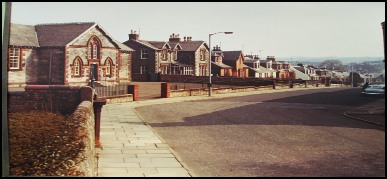
Dunlop Street 1970D

Stewarton Viaduct 2008
Coat of Arms reproduced by permission of Stewarton Community Council
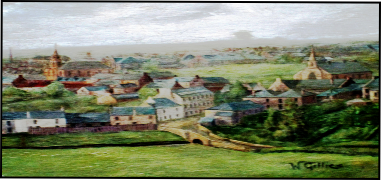
Springwell Place 1860
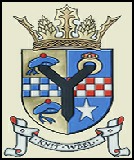
Site produced by
“Davie McKie’s Web Designs.”
Updated
26th January 2024
BONNET MAKING
The history of Bonnet making in Stewarton is believed to date back to the end of
the 16th century, and the records of the original Guild of Bonnet Makers date back
into the 17 century. They make fascinating reading, as they show how the men (and
only men) who knitted the bonnets controlled the trade. They appointed inspectors
or ‘sichters’ as they were called, to inspect the quality of the bonnets, and fines
were imposed for such things as underweight bonnets, weighing bonnets when they were
wet, or going off to work in Kilmarnock when there was an ‘idle set’ in Stewarton.
(These were periods when the Guild ordered production to stop, as an excess of bonnets
could mean a drop in the selling price.) The fines were collected by the treasurer,
or ‘box-
Bonnets were knitted by hand, using pique needles, which were about nine inches in length. A leather belt was strapped around the knitters’ waist, and extra needles were pushed into the belt, being pulled out as required as the bonnet increased in size. Once the bonnet was complete, it was dyed using woad which produced the distinctive indigo colour. It was then steeped in urine to help make it waterproof, after which it was stretched on a stretching stool and loose ends were cut off using large shears, and a carding brush combed out the pile on the finished bonnet. (All these tools can be seen in Stewarton Museum.)
B -
1868 -
1) Barclay & Downes -
2) Currie, Brown & Co -
3) Deans, Currie & Co -
4) James Gibson -
5) William Laughland -
6) Robert Mackie & Co -
7) Alexander Picken -
8) John Picken -
9) Picken & Wilson -
10) Pollock & Borland -
11) R. B. Robertson -
12) Alexander Rodger -
13) James Rodger -
14) Robert Sim -
15) Stewarton Bonnet Company -
16) David Wyllie & Son -
17) Wyllie & McDowell -
18) William Wyllie and Company -
HAND BONNET KNITTERS
![]()
MECHANISATION
In the 19th century, the industry was mechanised when Robert Sim set up a factory in 1820, followed by Robert Mackie in 1842. Mackie invented a machine to knit bonnets, rather than knitting them by hand, and although he patented it, he later allowed other companies to copy his design. As time went on, other designs appeared, such as the Balmoral, Glengarry and Alma cap ( after the Crimean War) and Mackie's can still produce headgear for almost every regiment in the British army to this day.
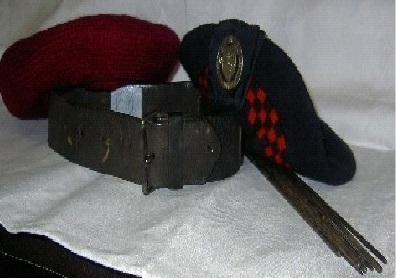
Ian’s A-
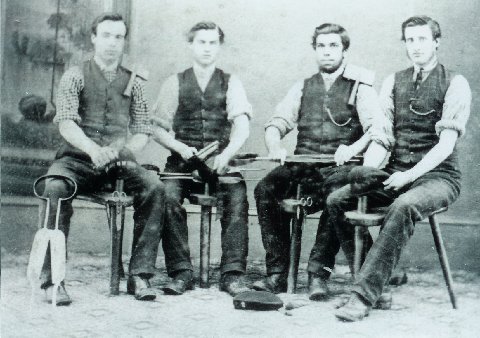
The picture below shows the belt and needles, with the larger Kilmarnock bonnet on the left and an official Stewarton Bonnet Guild bonnet on the right.